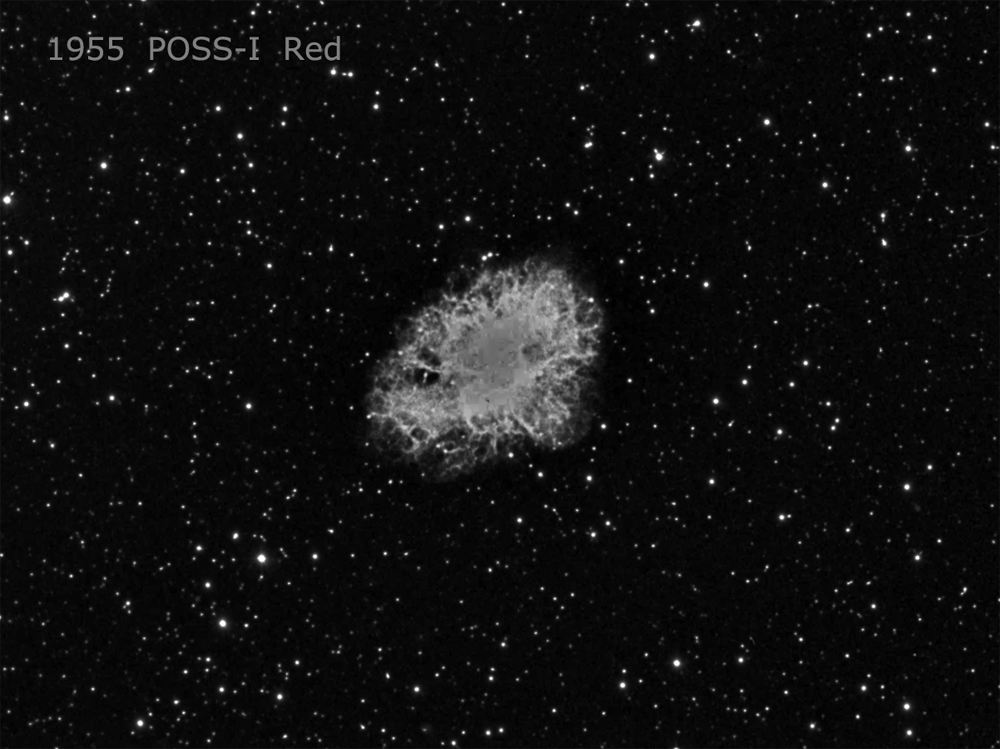
Click here for a higher-resolution image

Click here
for a higher-resolution image
The Crab Nebula is not an emission or reflection nebula but the remnant of a supernova that exploded in the year 1054 (Earth time) and was noticed and recorded by astronomers in China. This is a bicolor narrowband image with just 2.5 hours of total exposure (1.5 hours H-alpha, 1 hour O-III).
The Crab Nebula is expanding, and fairly rapidly compared to the usually long time scale of astronomical change. To demonstrate this I made the animation below using three images: (1) An image from POSS-I, the first Palomar Sky Survey, from around 1955, (2) An image from the second survey, POSS-II, from around 1995, and (3) this image from 2014. These three images are aligned with each other based on the fixed stars in the image so that the expansion of the Crab Nebula (or any other movement in the frame) can be seen. Although the three images don't match exactly in overall appearance, the expansion of the nebula can be easily seen by comparing the positions of the various strands of nebulosity versus nearby stars.

We can even use this animation to make our own estimate of when the Crab nebula was born via the supernova explosion. I chose a C-shaped filament in the lower left of the nebula and measured that it moves about 8.5 pixels from the first image (1955) to the last (2014), which gives a rate of movement of 8.5/(2014-1955) = 0.14 pixels per year. This filament is about 128 pixels from the center of the nebula so it would take 128/0.14 = 914 years to travel there from the center. This gives a birth year of 2014 - 914 = 1100, which is in the right ballpark.
To the upper right of the nebula is a star in motion. This is the magnitude-11.5 star TYC 1309-1640-1 and it has a high proper motion of about 1/4 arcseconds per year. The image scale here is about 1 arcsecond per pixel, so from 1955 to 2014 it moves (2014-1955)/4 = 15 arcseconds = 15 pixels.